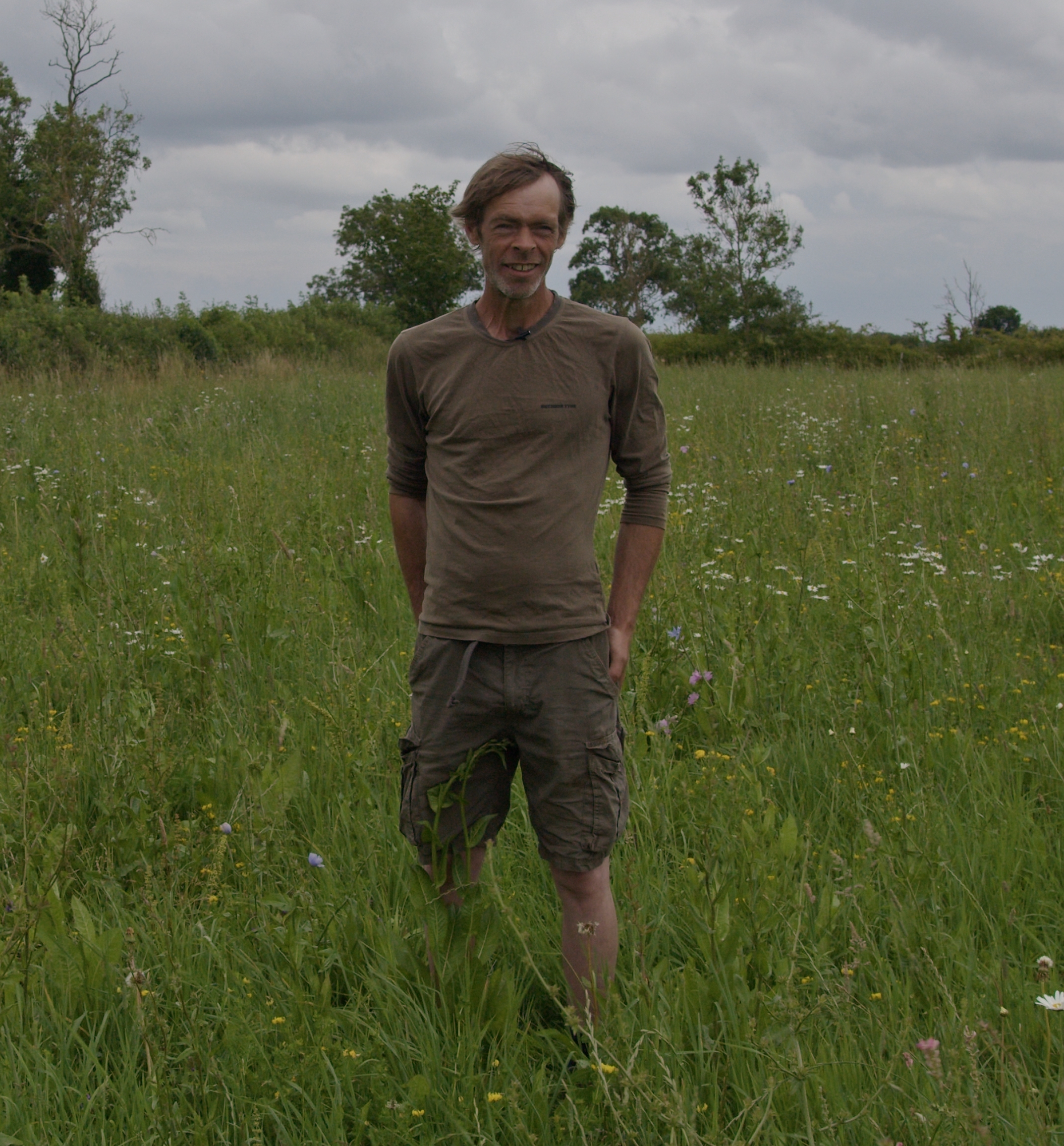

Farm Type: Mixed, with horse livery
Location: Northamptonshire
Size: 400 acres
Soil Type: Sandy
Mixes Used: Legume & herb rich sward (MIXGS4) and sainfoin
Dave’s grandfather bought the farm in the 1950s and it was later split between Dave’s uncle and father. Dave has been slowly taking over the reins on his father’s half. It’s a traditional mixed system, with Zwartbles sheep, Red Poll cattle and arable fields growing winter and spring barley, with spring oats as a break crop. Some of these oats are traditionally fed to the horses at his uncle’s livery.
The soil on Dave’s half of the farm is slightly acidic sandy soil. ‘It needs plenty of muck because it’s sandy soil and luckily it gets a lot because that’s where the livestock are based. On my uncle’s half, it’s all limestone brash and alkaline pH.’
Dave started growing legumes and mixed swards to access ecological payments and more recently through Countryside Stewardship. He was instantly impressed.
‘Sown during the spring, the ley got six weeks of rain and then the record-breaking drought of 2022. But it stayed alive. There were brown fields of grass everywhere and just this one field of green. We were thrilled. By 2023 when we had our first cut, it was so thick you couldn’t walk through it. Just amazing and all the animals went mad for it.’
Dave doesn’t feed his livestock any compound feed and started growing high legume, diverse leys under CS for the GS4 Herb Rich Sward option. Interestingly after feeding a few tester bales of forage to not just the livestock, but also some of the horses, he found this sort of forage boosted the condition of some of the higher performance horses, such as race horses liveried on the farm. The unique forage also had an ‘amazing’ added bonus that it seemed to have a calming effect on some of the horses as Dave explains below.
‘Forage tests showed not only was it very high in protein, but the different legumes provided different forms of protein that worked well together in the gut to aid digestion. Some of the horses had stomach ulcers and would just stop eating after the stress of a race; one particular horse lost 30-40 kilos! Within two weeks of adding a small amount of legumes as an additive in with his haylage, he was back to his pre-racing weight and is now off gastroguard (a stomach ulcer treatment). The legumes seem to be a stomach calmer which inevitably improves performance and results.’
Dave explains another interesting observation that seemed
to be improved by supplementing his grass haylage. ‘We had difficulty loading another horse for shows and point-to-points; a horse’s hooves show ripples when the animal is stressed. But once we started offering a small amount of this forage, her nerves disappeared and she would easily walk onto the trailer. The owner is thrilled and we put it down to the legumes as that’s the only thing that changed.’
Dave explains that with these sort of mixes he has seen differences in seed establishment reliability depending on the soil type its sown on.‘We had a couple of attempts on more acidic soil and it was good for the first year but it had no longevity as the grass would out-compete it, but the thinner, limestone brash has been very successful.’
Dave would like to grow more legumes in the rotation. ‘In a perfect world, I’d grow legumes for four years, then a year of low input heritage wheat to make good use of the nitrogen that’s gone into the soil, then back to the legumes. It would be great to sell the legumes to horse owners, but persuading them could be a long haul as it’s a very different looking feed and they are very much used to a ‘grassy’ looking hay or haylage bales. But as far as we are concerned, it’s an all-round positive.’
Date Posted: 11th August 2025




